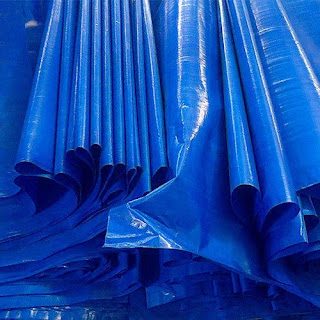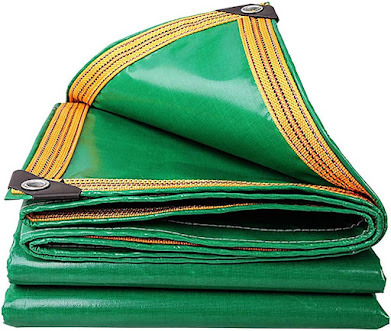Weatherproofing with Tarpaulins
Introduction
Weatherproofing with tarpaulins is a training that has been utilized for quite a long time to safeguard various items and structures from the components. PVC Tarpaulins, usually referred to as tarps, come in different sizes and materials, making them adaptable apparatuses for shielding everything from outdoor hardware to structures. In this article, we will investigate the different purposes of tarpaulins and how they are really weatherproof against downpours, wind, and UV beams, and that's just the beginning.
The Evolution of Tarpaulins
Tarpaulins have a long history tracing all the way back to old times. They were initially produced using materials like canvas and used to cover merchandise during transportation on ships. Throughout the long term, the materials and utilizations of tarps have developed, with present-day options including polyethylene, polyester, and PVC. These cutting-edge materials offer improved weatherproofing abilities and toughness.
Types of Tarpaulins
Polyethylene Tarps
Polyethylene tarps are reasonable and generally utilized for present-moment weatherproofing. They are accessible in various thicknesses, making them appropriate for different applications.
Canvas Tarps
Canvas tarps are known for their sturdiness and protection from UV beams. They are often utilized in outdoor settings and for long-haul weatherproofing.
PVC Tarps
PVC tarps are rock solid and offer magnificent protection against downpours and wind. They are ordinarily utilized for modern and development purposes.
Polyester Tarps
Polyester tarps are lightweight and solid, making them ideal for setting up camp, hiking, and other outdoor exercises.
Safeguarding Outdoor Gear
Vehicles
Tarpaulins are utilized to safeguard vehicles like vehicles, boats, and cruisers from cruel weather circumstances. They forestall rust and consumption brought about by openness to rain and UV beams.
Machinery
Development hardware, farm haulers, and lawnmowers can be shielded from downpours and sun harm utilizing tarpaulins.
Outdoor Furniture
Tarpaulins are utilized to cover outdoor furniture, for example, deck sets and barbecues, to expand their life expectancy and keep up with their appearance.
Shielding Building Destinations
Development Materials
Tarpaulins are utilized to cover development materials, keeping them dry and safeguarded from the components. This guarantees the nature of the materials and lessens squandering.
Worker Comfort
Tarpaulins make shielded spaces for workers on building destinations, offering protection from downpours, wind, and exorbitant daylight.
Home and Garden Applications
Roof Fixes
At the point when a roof is harmed and needs to be fixed, tarpaulins are utilized as impermanent patches to forestall water penetration until the fixes are finished.
Garden Protection
Gardeners use tarpaulins to safeguard plants from ice, as well as to make manure heaps and hold dampness in the dirt.
Setting up camp and Outdoor Undertakings
gent Groundsheets
Tarpaulin sheets are utilized as ground sheets under tents to keep dampness from leaking through and to make an obstruction against rocks and garbage.
Downpour Havens
Tarpaulins can be hung to give a dry region for cooking or associating during setting up camp outings.
Weatherproofing Structures
Crisis Asylums
In catastrophe circumstances, tarpaulins are often used to make crisis covers for uprooted people.
Agriculture
Ranchers use tarpaulins to safeguard crops from unfavorable weather circumstances, guaranteeing a more dependable reap.
Appropriate Tarpaulin Establishment
Securing Methods
To successfully weatherproof with tarpaulins, it's significant to appropriately get them. Normal methods incorporate utilizing ropes, bungee lines, or fastener ties.
Tensioning
Applying legitimate pressure to the tarpaulin forestalls fluttering in the breeze and guarantees a cozy fit.
Upkeep and Life span
Cleaning
Ordinary cleaning and expulsion of garbage from tarpaulins broaden their life expectancy and keep up with their weatherproofing capacities.
UV Protection
Treating tarps with UV-safe coatings can drag out their life when presented to coordinate daylight.
Ecological Contemplations
Sustainable Tarpaulin Options
Harmless to the ecosystem tarpaulin materials, like reused polyethylene, are turning out to be all the more generally accessible.
Reusing and Removal
At the point when tarps arrive at the finish of their life, they can often be reused, decreasing their effect on the climate.
Conclusion
Weatherproofing with tarpaulins is a flexible practice with a large number of uses. Whether safeguarding outdoor hardware, building destinations, and gardens, or making cover during outdoor experiences, tarpaulins assume an essential part in shielding against the components. By picking the right tarpaulin material and utilizing appropriate establishment and upkeep strategies, people and enterprises can guarantee the life span and viability of their weatherproofing arrangements while limiting their ecological effects.



Comments
Post a Comment